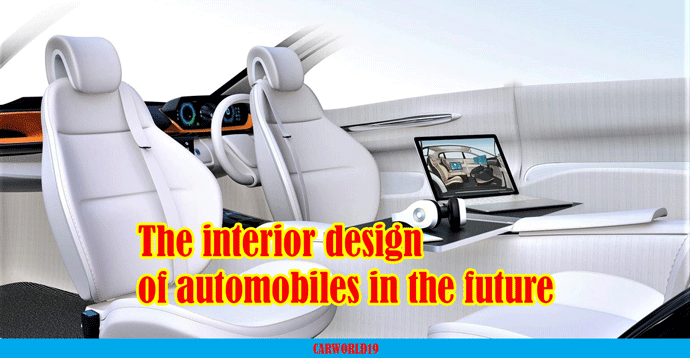Car interior design will take center stage in the new automotive world, as purchasers place a premium on the passenger experience.
 |
| The interior design of automobiles in the future |
How much does it cost to customize the inside of a car?
Imagine a future where the inside of a car, as well as the cabin experience that comes with it, are two of the most critical vehicle differentiators.
In this world, a vehicle brand's affiliates are waiting for the next operating-system update rather than the next vehicle's start of production; OEM CEOs introduce new human-machine-interface (HMI) systems as stand-alone products with the same excitement and fanfare as new models, and car magazines talk about comfort levels rather than acceleration and horsepower. This world is currently forming in the automotive industry, and it will change the way OEMs design and market automobiles.
The interior experience, which has traditionally dominated headlines, is projected to shift the attention away from automobile components such as engine performance, external design, and powertrains very soon. The fast-growing ACES megatrends—automation, connectivity, electrification, and shared services—will alter automobile configurations and allow passengers to have new experiences while traveling.
We looked at data from eight different sources to determine how important car interiors are becoming. An interior examination of over 50 current and concept cars; roundtable conversations and in-depth expert interviews with over 60 decision-makers from 25 prominent businesses; consumer surveys; and panel discussions with automotive specialists were among the topics covered.
We also looked at mobility trends by consumer category, drawing on our expertise working with automakers on car interiors, connectivity, human-machine interfaces, and the customer experience.
The importance of vehicle interiors and the in-car experience is becoming increasingly apparent, according to our findings. According to a poll, 71 percent of automotive executives believe car interiors will grow more significant in the future, while just 38 percent believe the same about vehicle exteriors.
 |
| The interior design of automobiles in the future |
Vehicle interiors are transforming as a result of current trends
The consequences of this research are examined in our article "The Future of Interior in Automotive," which focuses on two topics. First, we look at how car interiors have evolved in response to five influences (exhibit).
One fundamental development is the advent of new vehicle types, such as electric cars, which will have a significant impact on interior layouts and may permit previously inconceivable features such as swivel chairs. Similarly, advancements in connectivity and human-machine interfaces (HMI) may transform the cabin experience. Automated assistants, for example, may be better able to respond to the voices of all passengers. OEMs will include more "homelike" trim, such as chairs that mimic those in a living room, or other options that enhance the driving experience, such as automated climate-control systems, to make the interior more pleasant.
Customers are increasingly worried about decarbonization, therefore OEMs must bear ecological considerations in mind while they experiment with innovative interiors. Cost control will be essential, particularly for items that are not apparent or offer little value.
Following a discussion of car interior advancements, our essay outlines five strategic imperatives for OEMs and suppliers in response to these trends, including:
- Getting a better understanding of HMI technology, OTA capabilities, and future materials.
- Redesigning and speeding up the process of getting from concept to cabin.
- Lowering complexity to save money and provide more convenience to customers.
- Putting the client experience at the top of the priority list throughout the board.
- Forming new types of collaboration and partnerships to link the necessary talents in an increasingly complicated cabin.
Next steps for stakeholders in the industry
OEMs and suppliers should evaluate how to position themselves for future success as car interiors improve. With new players coming up or even outperforming old players in terms of connectedness and inner experience, established players must communicate their future vision rather than rely on their past reputations. The following are critical strategic questions for players across the value chain:
For vendors: How can we provide innovation help to an OEM? Are we a player in components, systems, or solutions? In a dynamic value chain, where do we have the most chance of succeeding?
For OEMs, how can we better understand our consumers' requirements and place them at the center of an ecosystem that we can only partially shape? How can we effectively collaborate with managed-services providers who design the automobiles, as well as mobility service providers that will want custom-built interiors, while also building our vehicle?
Providers of content: How can a video be optimized for different screen sizes? In a next-generation car, how may the effect of advertisements/promotions be raised without disturbing the driver?
The method that an OEM or supplier takes is heavily influenced by the company's existing capabilities and competitive position, as well as its future goals. To some extent, however, any corporation with an interest in automobile interiors will have to think about taking action in the areas outlined above.
The previously described strategies, in one way or another, speak to capacity (investments and partnerships) or efficiency (agile processes and complexity reduction), and OEMs and suppliers who get it right in these areas will be best positioned to reap the value of differentiation in the vehicle interiors.
